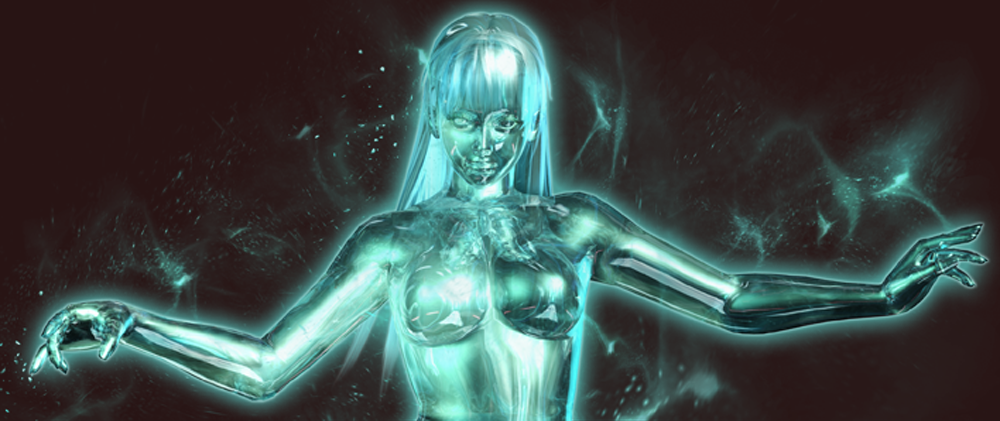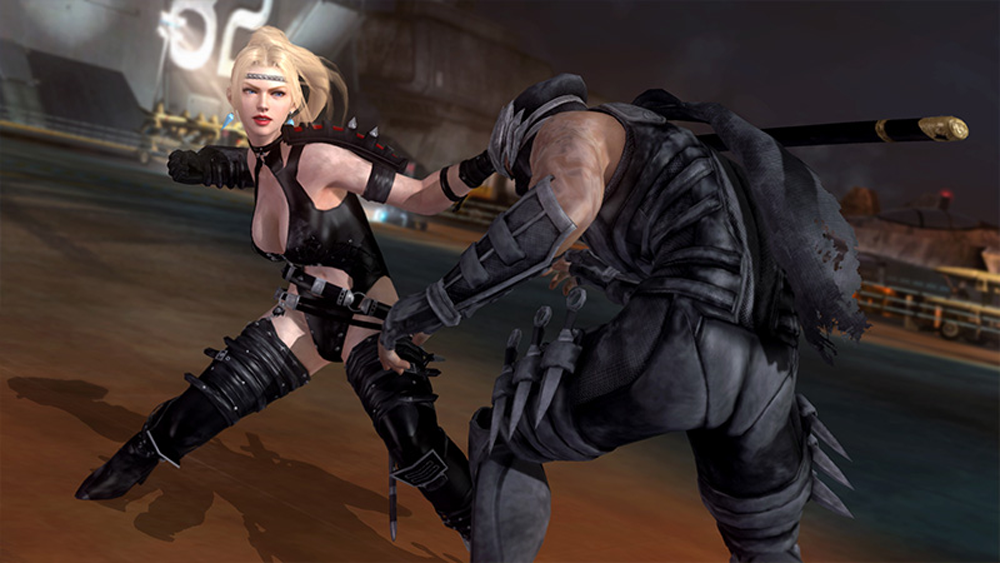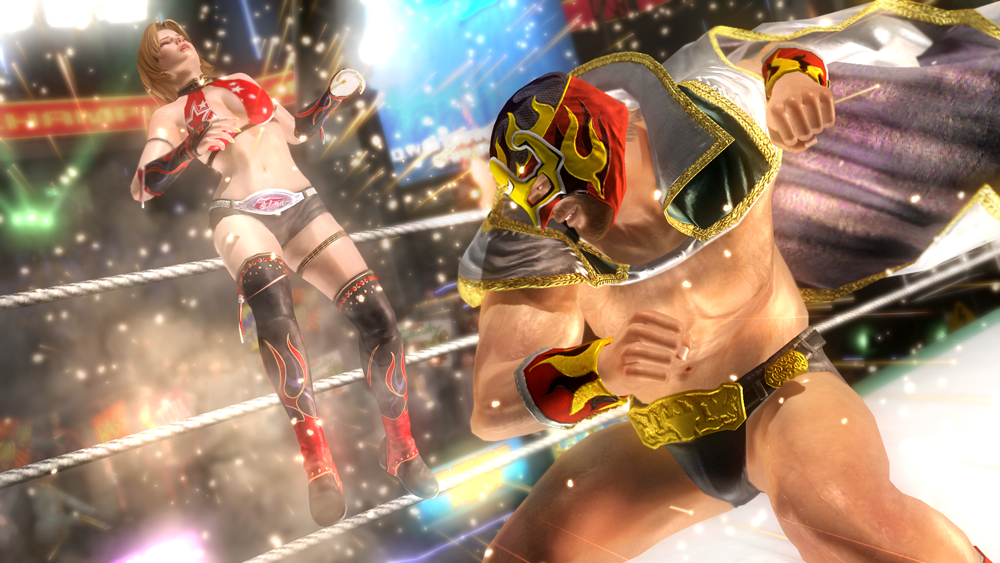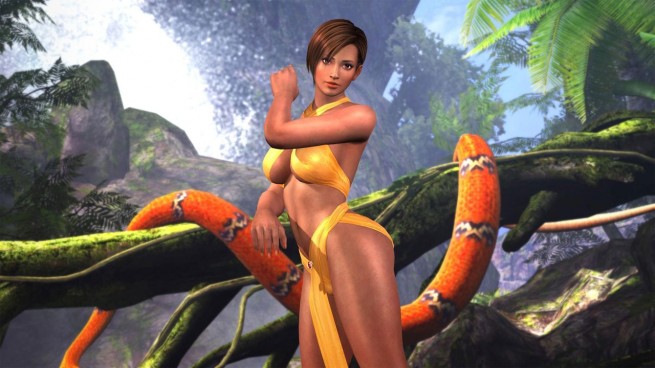Check out our Reviews Vault for a collection of GamesBeat’s previous review articles!
“You like fighters, huh? So, what’s your main game?”
I’ve been in the fighting game community for about twenty years and have faced that question thousands of times. It seems innocent, but when it comes from certain fighting game fans, it’s loaded with a lot of prejudice. It’s a compatibility check and personal evaluation rolled into one inconspicuous chunk of small talk.
So what does it say about someone whose answer is Dead or Alive? The hackneyed punchline here is that the person is really into boobs. The more realistic answer is that this person plays single player fighting games.
Dead or Alive’s rep is that just a few fans take it seriously. A new entry in the series is something you play to screw around with for a month while in between sessions for other games.
I’ll admit, I go into this sharing that viewpoint. It wasn’t until my conversation with Team Ninja last year that I began to wonder if we all have it wrong. So I spun up a PlayStation 4 retail copy of Dead or Alive 5: Last Round and prepared to analyze the hell out of it. Maybe I’ll find out why the series isn’t winning over the competitive scene? Or at least have a good understanding of what a Dead or Alive player is when they answer the community’s trick opening question.
What you’ll like
Rock, Paper, Scissor, Attack, Block, Throw, High, Mid, Low …
Modern fighting games have a horrible design trend. It’s more of a devolution, where designers are trying to create depth by slathering convoluted systems and meter-management mechanics on top of otherwise solid foundations.
Dead or Alive 5: Last Round’s design goes against this complication trend by trimming out unnecessary top layer systems and building off of the genre’s tried-and-true philosophy of threes: rock/paper/scissor. In Dead or Alive 5’s case, everything revolves around these three core concepts: Throws beat Blocks and Holds. Blocks and Holds beat Attacks. Attacks beat Throws.
From here, the system breaks down into other sets of three. Attacks can hit high, mid, and low. This obviously turns blocking into its own set of three, which is crouching, standing, or activating a Hold (more on this later). Being knocked on the ground has three possibilities of wake up (a term for getting your character to stand back up): attack, roll, stand — which in themselves have their own set of multiple choices. You can technically play the game with a three-button stick, using only block, punch, and kick.
The number three is everywhere, and when it comes to decision-making, Dead or Alive rarely breaks from it. This keeps every critical decision just simple enough for anyone to competently play, yet it provides for complexity to flourish on the player side of the game. Depth is taken as far as the two participants are willing to push each other.
And I love it! The three system is an old-school way of designing a foundation, but it isn’t antiquated because it’s been proven over and over again to be solid.
The comeback mechanic, for once, is not completely stupid
To explain my hatred for one-shot supermoves, I’d have to answer the trick question posed earlier. My answer, if it wasn’t obvious already, is Street Fighter II. With that said, I’d be a hypocrite if I claimed I didn’t enjoy comeback mechanics at some level, because one of my favorite games is Super Street Fighter II Turbo — the game that opened the supermeter Pandora’s box and doomed the genre forever.
In modern games the comeback mechanic, believe it or not, has become even sloppier. Games often reward players for their mistakes with these big, powerful moves, which result in cheap and dirty upsets against those that play well. I’m staring straight at you, Street Fighter IV’s Ultra system.
In Dead or Alive 5: Last Round, Team Ninja is sticking with this “bad play” mechanic by permitting players to earn a “Power Blow” once their health has dipped below 50 percent.
However, landing the thing against a human opponent is tricky. For one, it’s slow out of the gate. A player performing this move has to commit to a significant wind-up while it charges, giving the opponent plenty of time to see it coming and do … something. Anything! Even if it’s just getting the hell out of the way!
And it seems to have a universal way to combo the move into a clean hit, but again, this setup requires mind-gaming the opponent into the situation in the first place.
This makes the comeback feature something that isn’t totally loosey-goosey. If you’re outplaying someone for 90 percent of the round, they can’t steal the win from you because of one Hail Mary supermove coming out of someone’s wake up. If you eat a Power Blow in Dead or Alive 5, it’s because you were significantly outplayed.
The Hold system is ingenious
Where I am most impressed with Dead or Alive 5: Last Round’s system design is in the Holds system. Think of Holds as a modified version of parrying in the Street Fighter III series. Parrying is a mechanic that enables a defensive player to nullify the damage output from a single hit by tapping forward just as a move is about to make contact with their character.
Unlike parries in Street Fighter III, however, a Hold kills the move dead in the water and does not put the defensive player in a counter attack situation (see the famous Justin Wong vs. Daigo Umehara match, where Daigo has to perform multiple parries for one move and is then allowed to counterattack). A successful Hold in Dead or Alive 5 will put the offensive player into a special throw, which grounds them — and kills their offensive momentum.
Team Ninja added a stroke of brilliance to this system: You can execute a Hold at any time, as long as the character performing the Hold is not in the air or laying on the ground. This includes permitting a player to perform a Hold while in hit stun, which is the small window of time where a character is stuck in their “reeling back” animation, which provides for another move to land (creating a combo).
This means that executing, or eating, a long set of combo strings does not create a break in the guessing game. The offensive player performing the combos can’t just stick to the same optimal bread-‘n’-butter list of moves repeatedly in a match. If they do, the defensive player is going to eventually wise up and predict a specific high/mid/low attack to Hold against in mid-combo.
If the offensive player wants to avoid having to mix up their combo, they can try altering their string into a move that launches, putting the opponent into the air and unable to perform a Hold. Yet, that creates a whole other mind game. The defensive player can anticipate that and try to perform a hold against that launcher.
Other games feature a similar design, where a player can break a combo and get out of trouble, but it is often tied to a meter or is considered a one time thing. In Dead or Alive 5: Last Round, you can always break out of an opponent’s combo. You just have to always be willing to make an intelligent guess at the right time.
This Hold system is an example of what’s beautiful about this game. Everything is simple, elegant, and geared toward never allowing the guessing game to slow down. At the surface, these systems look simplistic, and they are, but that simplicity allows players to concentrate on putting each other into situations that are complex in a way that is enriching. You must outplay the player, not the game.
The cheesecake factory …
Despite Team Ninja’s waffling on its art direction stance during the last few releases, the Dead or Alive series has never been deceitful about being a sexually charged product. Last Round still features over-the-top sexualized characters, including the infamous female breast bounce and impractical, revealing outfits.
It also has a selection of handsome boys and bearded hunks thrown in, although being a heterosexual male, I am making a wild guess that these characters are attractive. I know I wish I had their core strength, that’s for damned sure. I want to believe that Team Ninja is trying to appease everyone, but maybe that’s wishful thinking?
Overall, as an artist, I enjoy Team Ninja’s flamboyant take on the human body. The men and women on the roster are an unrealistic, yet sincere stylization of beauty, functioning as vessels for a variety of fantasies. In that context, I don’t see why Team Ninja should be ashamed of any of their exaggerations of the human form. I recognize that some people will disagree and find themselves repelled by the sexuality. That’s fine. I am not one of them.





